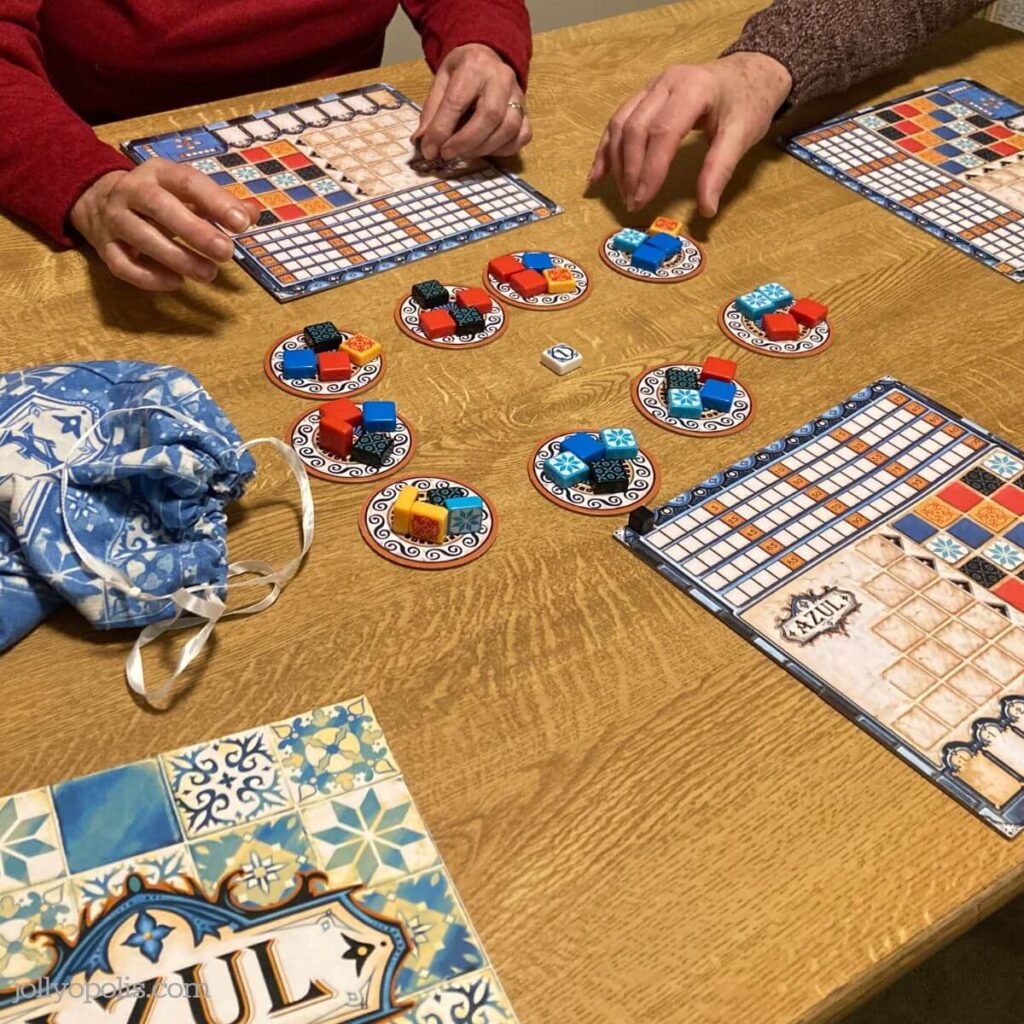Azul is a beautifully designed board game that hides a lot of strategy in a family friendly package.
Things to like: Beautiful looking, deceptively deep strategy, light player interaction.
Things to dislike: Slightly superficial theme.

Game overview
| Number of players | 2-4 |
| Game length | 30-45 minutes |
| Age range | 8+ |
| How long to learn the rules | 15 minutes |
| Component quality | High |
What is in the box?

- 100 resin tiles and beautiful linen bag
- 4 cardboard player mats
- 9 factory coasters
- 1 rulebook
How Azul plays
A game of Azul takes place over a series of rounds, with each round comprising of two basic stages. The ‘factory offer’ stage begins with the resin tiles placed upon coasters in the middle of the player area. Taking in turns, players pick up all tiles of the same colour from any one of the coasters (or from the centre of the table). Any remaining tiles from that coasters are placed in the middle of the table and are available to be picked up by players on subsequent turns.
Tiles that are picked up must then be placed in one of five rows of increasing capacity. The catch here being that each row can only hold one colour of tile, and any tiles that cannot fit in the selected row fall onto the floor (score negative points).
The second ‘wall tiling’ stage involves players moving one tile from each completed row on their board over to the corresponding colour on their wall area. As soon as you place this tile you score points, with more points scored if there are adjacent tiles already on your wall. Therefore, you will score many points if you can place a tile so that it forms a long line with existing tiles.
In addition to the points that you accumulate over the course of the game when placing tiles, extra points are awarded for each completed line (of five tiles) and for each colour of tile you have managed to collect all of.
You can read the full rules of Azul here.
Final thoughts on Azul
Azul is one of only a few board games that has become mainstream and can be found outside of specialist games shops and there is good reason for this. The game may initially appear quite simple. However these is lots of hidden depth here. Do you try to quickly generate as many points as you can, or do you aim to complete rows and columns to score bonus points at the end? Once you get the hang of playing, it is very possible to try and disrupt your opponents’ plans by denying them or forcing them to take certain tiles.
Thoughts on Azul from a non-gamer (my wife)
The rules initially appear complex when they were being explained. However, when we started playing the game, I soon got the hang of it. After a few rounds the I started to develop a real strategy and started to appreciate the many layers the game has to offer. I liked the fact that the theme of the game (tilling a palace) is very different to other games I have come across. I would love to play the game again!